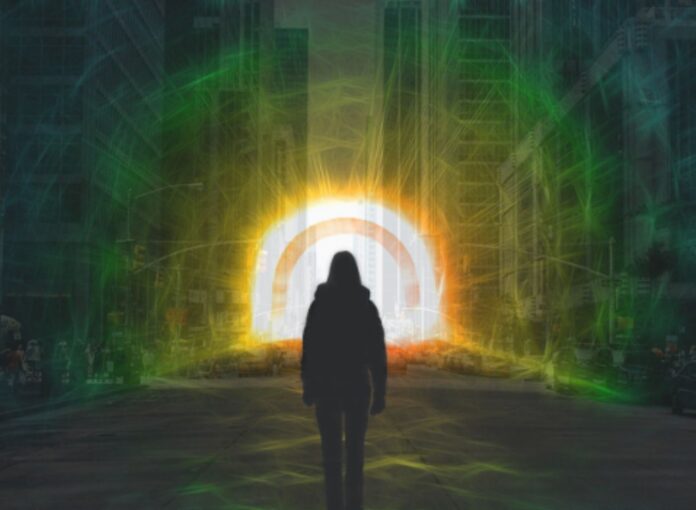The human mind is capable of processing vast amounts of information and making sense of the world around us. However, our brains can sometimes play tricks on us, leading us to believe things that aren’t necessarily true. This is true when it comes to conspiracy theories of alternate realities.
Factors Leading to Belief in Alternate Realities
Conspiracy theories of alternate realities are not a new phenomenon but have gained increased attention in recent years. There are factors that contribute to this type of thinking. These include cognitive dissonance, misinformation, and our innate desire to make sense of the world around us.
One of the main factors leading to belief in alternate realities is cognitive dissonance. Cognitive dissonance occurs when a person’s beliefs or attitudes conflict with their behavior or the information they receive. This can lead to discomfort and anxiety, prompting individuals to seek information that confirms their beliefs or to reinterpret information to fit their worldview. For example, many people believe that the moon landing was a hoax, despite overwhelming evidence to the contrary. This belief may be rooted in cognitive dissonance, as it conflicts with their worldview that the government is untrustworthy.
Misinformation is another factor that contributes to belief in alternate realities. In today’s era of instant communication and the abundance of information available online, it is easy for false or misleading information to spread quickly. For instance, some people believe that vaccines are harmful, despite overwhelming scientific evidence to the contrary. This belief has been fueled by the spread of misinformation on social media and other online platforms.
Dangers of Belief in Alternate Realities
Belief in alternate realities can lead to a breakdown in trust and communication, a sense of hopelessness and despair, and further division among individuals and groups.
It can have serious consequences. For instance, the belief that the earth is flat has led some people to reject scientific evidence and question the validity of other scientific discoveries. This has resulted in a breakdown of trust and communication between people with different beliefs and a sense of hopelessness and despair among those who accept scientific evidence. The notion that climate change is a hoax has also led to inaction and a failure to take the necessary steps to mitigate the effects of climate change.
Steps to Combat Belief in Alternate Realities
One way to combat belief in alternate realities is through education. By promoting critical thinking and media literacy, we can help people better understand how information is disseminated and how to evaluate sources of information. This can help people differentiate between facts and fiction and make more informed decisions. For example, some schools are incorporating media literacy courses into their curriculums to help students develop these skills.
Another important step is to promote open and honest communication between people with different beliefs. By engaging in respectful dialogue and seeking to understand the perspectives of others, we can build bridges of understanding and create a more cohesive society. For instance, initiatives like “Living Room Conversations” bring people from different backgrounds together to discuss controversial topics and promote understanding and empathy.
Finally, it’s important to recognize that the desire to believe in alternate realities is not unique to conspiracy theorists. We all have a natural inclination to believe in things that make us feel good or that align with our existing beliefs. By acknowledging this tendency, we can approach information with a healthy dose of skepticism and avoid falling prey to misinformation or conspiracy theories.
Examples of Conspiracy Theories of Alternate Realities
One of the examples of a conspiracy theory of an alternate reality is the belief in the “Mandela Effect.” This phenomenon refers to a collective misremembering of certain events or details, leading some to believe that they are living in a parallel universe or alternate reality. For instance, some people believe that the popular children’s book series is called “The Berenstein Bears,” when in fact, it is spelled “The Berenstain Bears.” Others believe that the comedian Sinbad played a genie in a movie called “Shazam,” when no such movie exists.
Another example is the belief in the “QAnon” conspiracy theory. This theory posits that a high-ranking government official, known only as “Q,” is leaking information about a secret war between former President Trump and a cabal of deep state operatives who are involved in child trafficking and other nefarious activities. Despite there being no evidence to support this theory, it has gained a following among some segments of the population and has led to real-world consequences, such as the storming of the U.S. Capitol on January 6th, 2021.
Conclusion
Conspiracy theories of alternate realities are a complex and multifaceted phenomenon that can have serious consequences for people and society as a whole. By understanding the underlying factors that contribute to belief in these theories, such as cognitive dissonance and misinformation, and taking steps to combat them, such as promoting critical thinking and media literacy, we can create a more informed and rational society where facts are valued over fiction. We must take steps to promote open and honest communication between people with different beliefs.
